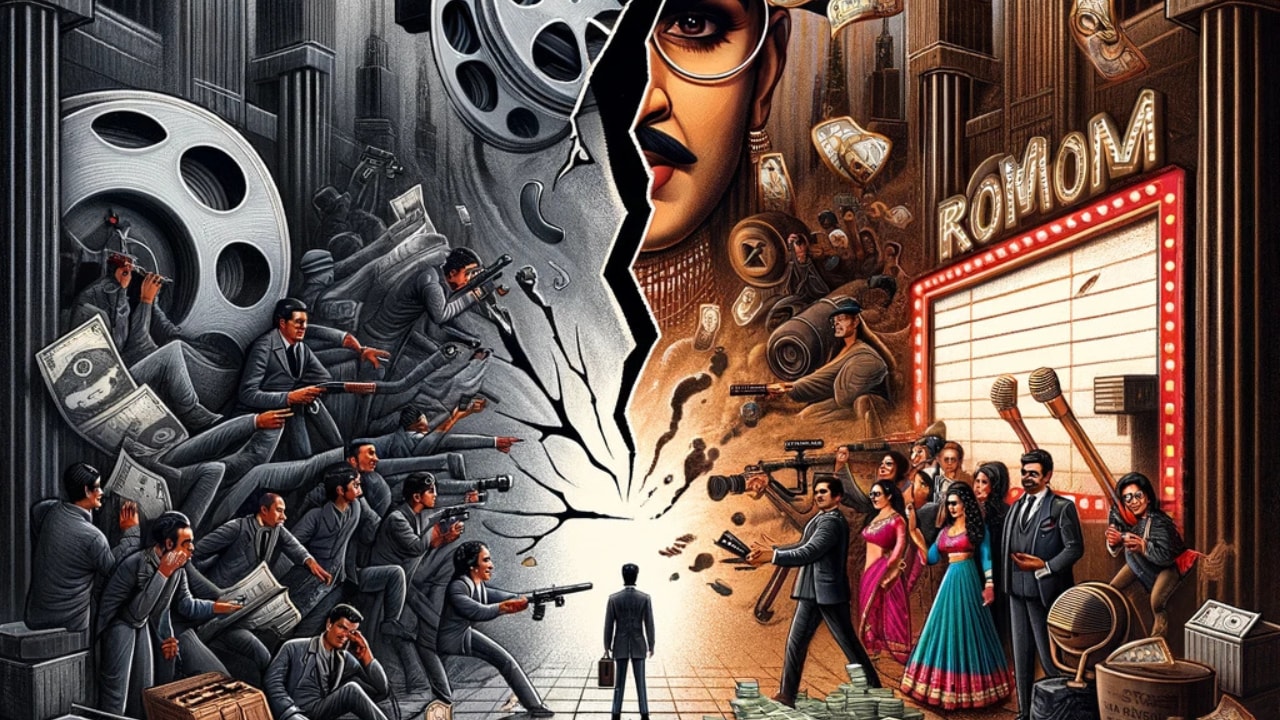For decades, India’s film industry thrived on a delicate balance – producers managed budgets, actors accepted reasonable fees, and storytelling was at the heart of cinema. But today, the landscape has changed dramatically. As soaring production costs collide with an industry increasingly dominated by corporate interests and talent agencies, the question looms: Can Indian cinema find a way to restore equilibrium, or is it on an unsustainable path?
Read More: Entertainment industry faces crossroads: Slowing production and shifting trends
Once upon a time, a film’s financial success was a straightforward equation. A producer’s profit was determined by the regional territories in which a film was sold – North, South, East, West, and Central India. Veteran filmmaker Viveck Vasvani recalls that, in the past, actor fees were proportionally calculated based on projected earnings. “If a leading star’s film was sold for Rs 40 lakh, the main actors would receive Rs 8 lakh, Rs 5 lakh, and so on,” he explained. The system ensured that budgets remained practical, dictated by producers working closely with distributors.
That system, however, has largely disappeared. Today, talent agencies and corporate studios dictate terms, inflating actor fees and shifting decision-making away from traditional producers. “Previously, we had control,” Vasvani said. “Now, we’re just a cog in a corporate machine.”
The entry of major corporate studios has altered the very fabric of filmmaking. Unlike the past, when producers were stakeholders in their own films, today’s industry operates on a hierarchical structure: investors fund corporations, CEOs report to boards, and financial objectives often take precedence over creative vision.
Producer Mukesh Bhatt sees this transformation as a fundamental shift. “Actors have become increasingly complex,” he said. “Talent agencies fuel their egos, making entourages and vanity expenses a norm. The biggest stars I worked with never demanded such luxuries. Now, it’s expected.”
The addition of talent agencies has further complicated the economics of film production. A producer, on condition of anonymity “If I want to make a film for Rs 100, I need to allocate another Rs 100 just for the actor and their entourage,” he said. The inflation of production costs is compounding the financial difficulties faced by production houses, making even the most high-profile projects a gamble.
Explaining further, he said the rather recent fad of ‘entourage’ of an actor has caused a whole lot of trouble for producers. “This consists of hair-and-makeup artists, assistants, security, personal chef, gym trainer and a physiotherapist – this is a normal one. Sometimes the number of these individuals can be higher. Each of them can charge a maximum of Rs 50,000 – Rs 60,000 a day. The hair and makeup department is especially expensive. This can amount to about Rs 1-2 lakh per day, so for a 60-day shoot, apart from the cost of the star, this costs producer more than Rs 1 crore.”

Despite the perception that Indian cinema is thriving – with some films crossing Rs 100 crore, Rs 200 crore, and even Rs 500 crore – the financial reality is often less rosy. Vasvani points out that reported earnings can be misleading. “When I made a film in the past, my profits directly impacted my lifestyle. Today, reported earnings don’t always reflect actual revenue,” he said.
Box office figures, he argues, are frequently exaggerated. “Only the CEOs of multiplex chains truly know how much foot traffic their theaters see and how much revenue they generate from exorbitantly priced concessions,” Vasvani said. With advertising covering every inch of multiplexes and ticket prices soaring, cinemas are generating record revenues. Yet, producers often receive only a fraction of the earnings.
Bhatt is even more blunt. “Our industry is built on deception. Fake box office numbers, inflated social media buzz – who are they fooling?” he asked. “Movies are no longer made; projects are manufactured.”
Film trade analyst Fenil Seta says, “An actor has different ways of earning money – through brand endorsements, public appearances etc. But a filmmaker can earn only making films and if the economics doesn’t match repeatedly, the producer might shut shop and this will ultimately affect the industry. An actor’s fee now takes up a major chunk of the budget, but the film which struggles to get an initial opening. In such a scenario, everyone wonders how why did the producer even agree for an obscene amount in the first place? Ideally, all major actors should opt for profit sharing.”
Hollywood, Bhatt points out, operates differently. “In the U.S., actors often take a stake in a film’s profits. If a film makes Rs 600 crore, the star shares in the earnings. That’s fair business. Here, actors demand sky-high fees upfront, leaving producers with little to work with.
A few actors have started embracing the Hollywood model, opting for profit-sharing over fixed fees. This shift could bring a much-needed correction to the industry, ensuring that both artists and producers have a vested interest in a film’s success.
But Bhatt remains skeptical that change will come easily: “Either the industry dismantles it entirely, or we wait for a new generation to replace the old guard.”
Karan Johar in an interview had spoken about the exorbitant amount of money the actors charge. “There are about ten viable actors in Hindi cinema, and they are all asking for the sun, moon, and earth. So, you pay them. Then you pay for the film and the marketing expenditure. And then your film doesn’t do the numbers … How’s that math working?” Johar told YouTube host Faye D’Souza in an interview on her channel.
Actor John Abraham, who is a producer as well, addressed the issue of high actor fees and entourage costs in an interview with The Hollywood Reporter India. He expressed concerns about the financial strain these expenses place on the Hindi film industry, stating, “It’s already hurting Hindi cinema. At this point in time, we shouldn’t be paying people to act in films because we don’t justify those huge budgets. We can’t load a film with entourage costs as well. It’s ridiculous” He also highlighted the excessive costs of actor entourages, noting that some stylists charge up to Rs2 lakh per day. Abraham suggested that actors should consider reducing their fees and instead take a share of the film’s profits, aligning their earnings with the movie’s success.
Filmmaker Zoya Akhtar, during a directors’ roundtable hosted by The Hollywood Reporter India, spoke about the issue too. Johar emphasized the need for male actors to reassess their remuneration and Akhtar responded by saying, “…But Karan, you have to just stop paying. You have to stop paying. That’s it.”
Also Read: From Scripts to Screens: Here’s how AI is redefining India’s entertainment landscape
